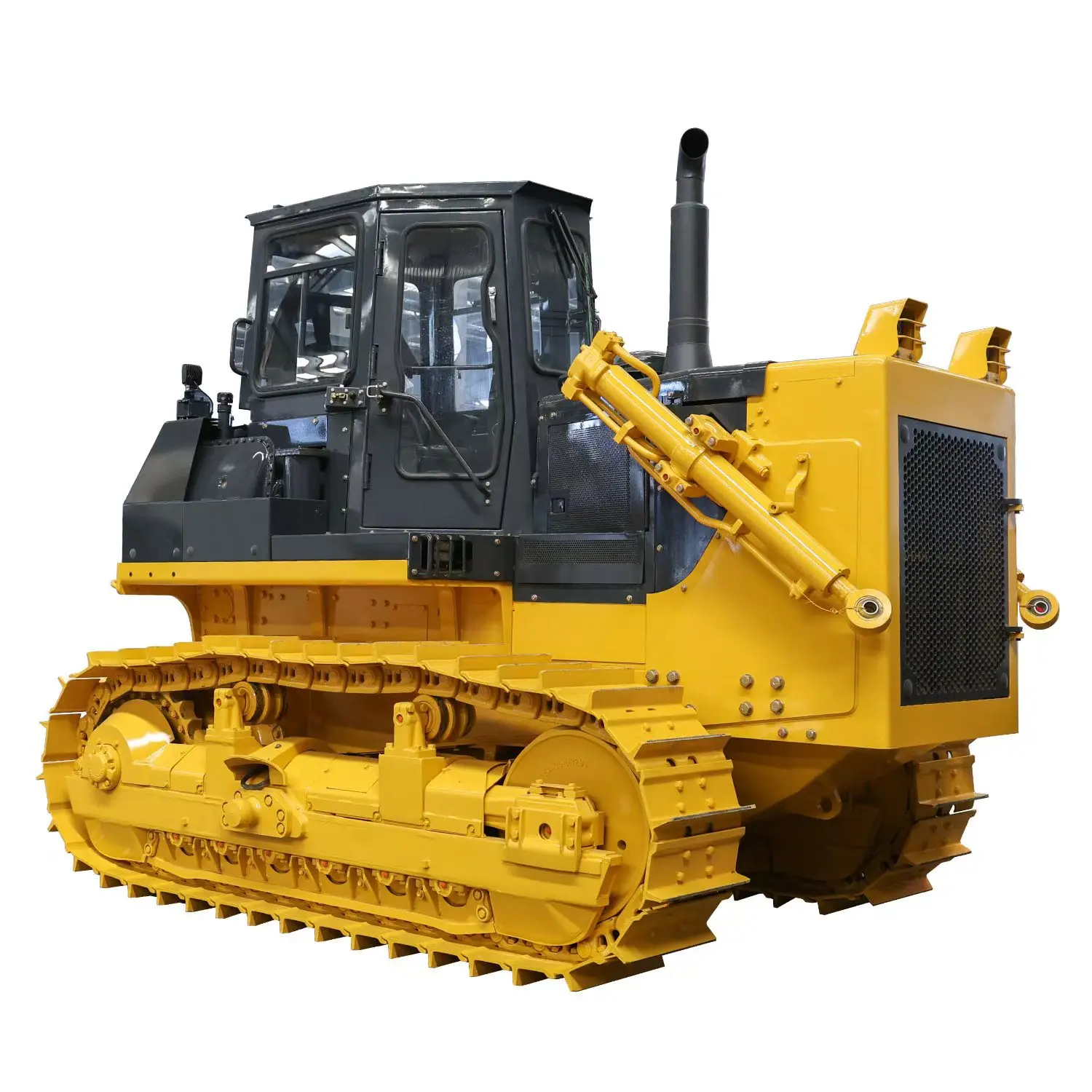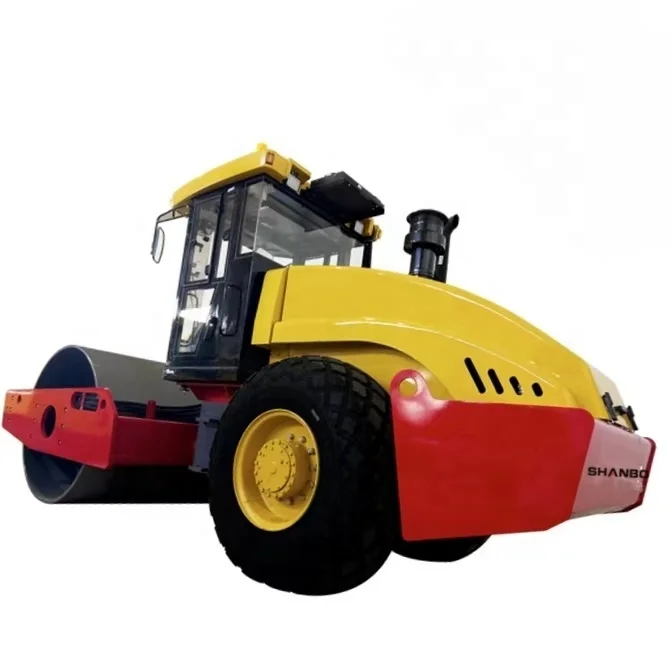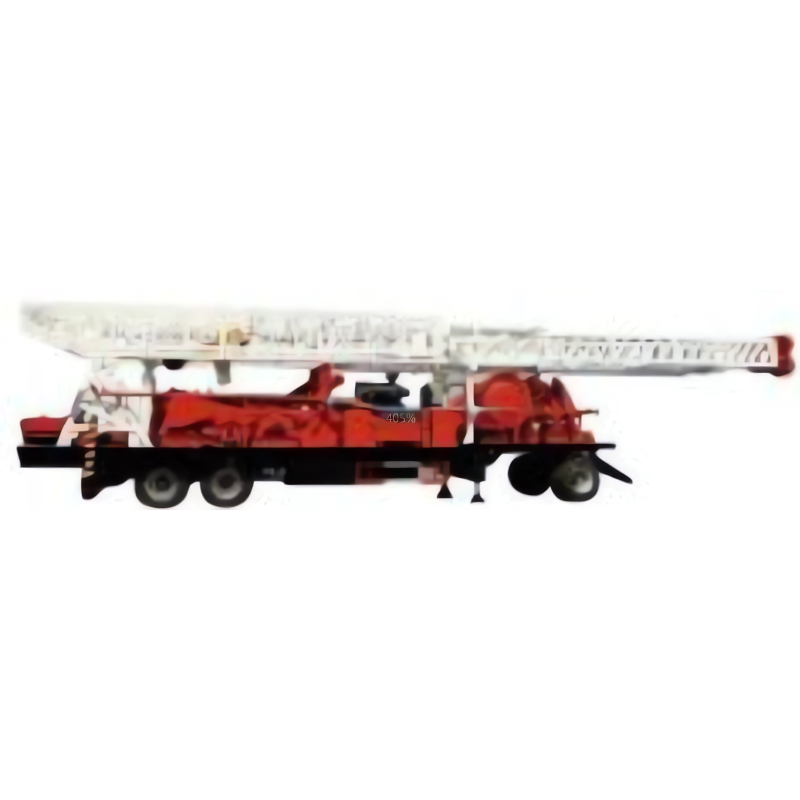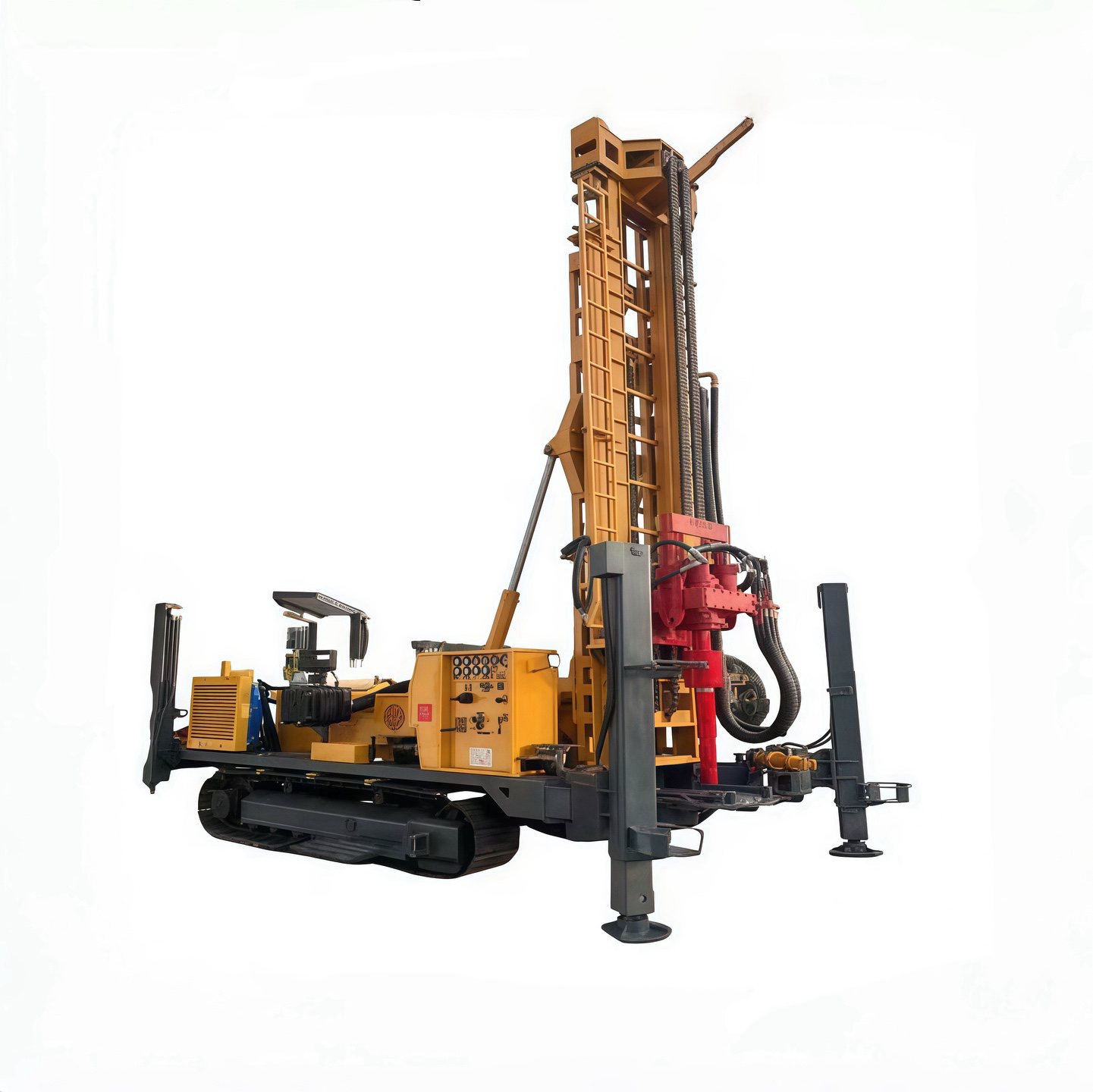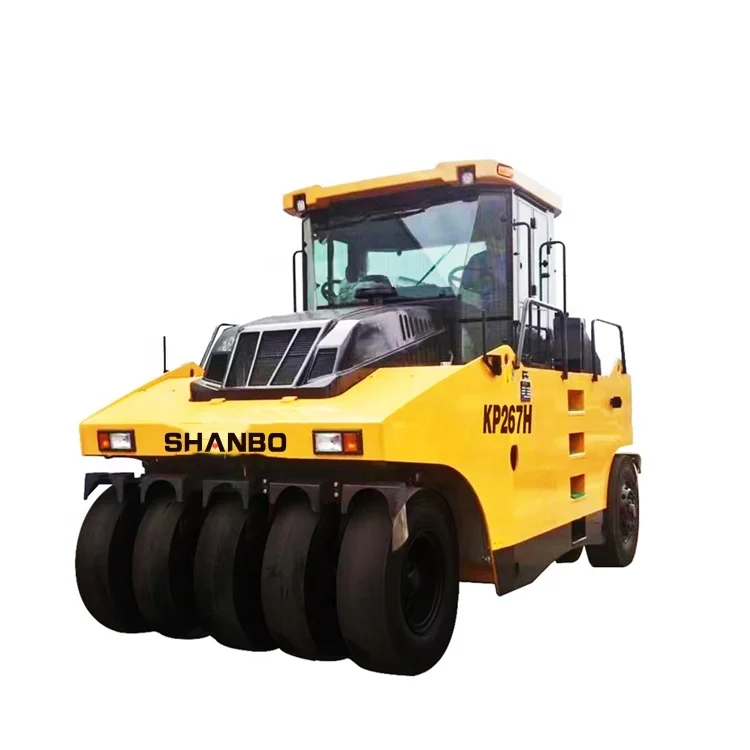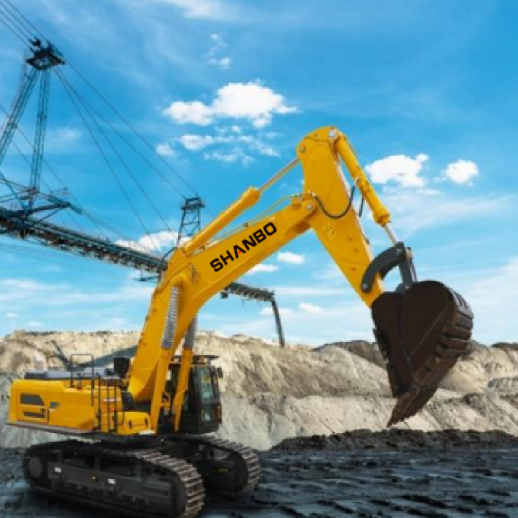Maintenance Tips for Keeping Your Bulldozer Machine in Top Condition
The Critical Role of Bulldozer Maintenance in Machine Longevity
Understanding Bulldozer Wear and Tear
Properly maintaining a bulldozer is crucial to prolonging its lifespan, especially considering the wear and tear on its parts. Key components such as tracks, blades, and engines experience significant degradation due to regular usage.
Tracks require frequent checking and adjustments so they don't get out of line or start wearing down over time. The blades should also be looked at regularly because they take a beating when moving across rough ground day after day. And let's not forget about the engine either. Keeping it running smoothly means changing the oil on schedule and making sure those air filters aren't clogged up. A well maintained engine is what keeps everything going strong in the field.
Operating conditions also significantly affect wear and tear. Varying terrains and loads can hasten the degradation of bulldozer parts. Harsh terrains like rocky surfaces and heavy lifting are known to increase strain, potentially shortening the machine's useful life.
Industry numbers show that skipping proper maintenance for bulldozers really shortens how long they last on job sites. One particular research found that if operators don't stick to their maintenance schedules, bulldozers might only run half as long as they should before needing major repairs or replacement. Regular checkups and servicing aren't just good practice they actually make all the difference in keeping these heavy machines running smoothly year after year instead of breaking down prematurely.
Cost-Benefit Analysis of Preventative Maintenance
Implementing a preventative maintenance program offers significant financial benefits compared to reactive maintenance approaches. Preventative maintenance involves routine checks and timely replacements, which reduce the likelihood of expensive breakdowns and downtime.
By addressing small issues before they escalate, businesses can avoid the high repair costs typically associated with neglected maintenance. For example, case studies from companies employing proactive maintenance strategies have demonstrated notable savings in repair expenses and reduced machine downtime.
The numbers back it up the return on investment from doing preventive maintenance on heavy equipment is pretty impressive. According to industry reports, companies typically end up saving around $5 for every $1 they spend on keeping their machines well maintained. That means less money going into emergency repairs and fewer hours wasted when equipment breaks down unexpectedly. For construction firms running bulldozers day in and day out, this kind of maintenance makes all the difference. A regularly serviced bulldozer just lasts longer and performs better over time, which translates directly into real savings at the bottom line.
Overall, incorporating a robust maintenance schedule not only extends the life of the machine but also contributes to financial savings, making it a wise business decision for any company relying on heavy equipment.
Essential Bulldozer Maintenance Schedule: Daily, Weekly, Monthly, and Annual Tasks
Daily Bulldozer Maintenance Checklist: Fluids, Filters and Visual Inspection
Keeping a bulldozer running smoothly begins with those daily checks nobody really wants to skip but everyone knows matters for how long the machine lasts. Operators need to look at oil levels first thing in the morning before starting work, along with coolant and hydraulic fluid levels too. Neglecting this basic step can lead to breakdowns mid-job or worse, expensive fixes down the road. The truth is, most problems with bulldozers start small but grow fast if ignored during routine inspections.
Inspecting filters for clogs and wear is integral to preventing contamination in the engine and other vital components. Daily visual inspections also offer a quick overview of potential mechanical issues, allowing operators to detect early signs of wear or leaks.
Creating a daily checklist really helps streamline operations for most equipment work. When someone actually writes down everything they need to check or do each morning, things just run better overall. The main benefit? Consistency in how maintenance gets done day after day, which keeps bulldozers running strong without unexpected breakdowns. Most experienced operators know this from experience - sticking to a routine prevents those costly surprises down the road. A good checklist makes sure nothing gets missed during inspections, so the machine stays dependable even when conditions get tough on site.
Weekly Undercarriage and Track Maintenance Procedures
Keeping the undercarriage in good shape makes all the difference when it comes to how well a bulldozer actually works day after day. Let's face it, most of the wear and tear happens down there, so spending time checking it out once a week isn't just smart, it's practically necessary. Anyone operating these machines needs to get down low and give the undercarriage a thorough look, sweeping away rocks, dirt, and whatever else gets stuck in there because those little bits can really eat away at components over time. Don't forget about adjusting the track tension either. Get this wrong and things start breaking faster than they should. Tracks that are too tight will stress everything unnecessarily while ones that hang too loose just bounce around and create their own problems.
Adjusting track tension on bulldozers isn't just important it's absolutely essential for keeping the machine running properly. If operators skip regular checks, tracks will sag too much and wear out faster than they should. Some folks find that using diagrams or even short video clips really helps them grasp how to do these adjustments right. When someone actually sees what needs to happen, they tend to get it done correctly every time. Getting these small things right makes all the difference in the long run. A well maintained bulldozer means fewer breakdowns and saves money that would otherwise go toward expensive repairs after something goes wrong during operation.
Monthly Hydraulic System and Component Deep Checks
Monthly deep checks of the hydraulic system are imperative to prevent failures that could disrupt operations. Critical components like hydraulic lines, pumps, and cylinders should be thoroughly inspected for leaks or damage. Regular evaluation helps identify potential issues before they escalate, safeguarding the efficiency of the bulldozer's hydraulic system.
Keeping hydraulic fluid in good shape matters a lot for smooth running equipment. Anyone working with these systems needs to check fluid levels regularly and watch out for anything suspicious in the fluid itself. When dirt or debris starts showing up, it's time to drain and replace the old stuff before problems develop. Good maintenance habits make all the difference too. Cleanliness around hydraulic components goes a long way, along with routine inspections that catch small issues before they turn into big headaches. Most shops find that sticking to these basic rules cuts down on unexpected breakdowns and saves money in the long run when compared to emergency repairs after neglect sets in.
Annual Engine Calibration and Predictive Maintenance
Getting an annual engine calibration done keeps bulldozers running at their best for longer periods. Mechanics adjust things like fuel injectors and ignition wires during this service, which helps the machine run smoothly and cuts down on unexpected breakdowns when work is already underway. Many operators now rely on predictive maintenance techniques too. These methods basically look ahead to spot problems before they actually happen, so technicians can fix small issues before they turn into major headaches on site. Some companies report up to 30% fewer emergency repairs after implementing regular calibration schedules combined with these forecasting tools.
When something's wrong with a bulldozer, there are usually telltale signs like strange noises coming from under the hood, burning through fuel faster than normal, or noticeable shaking while operating. Fixing problems as soon as they appear helps keep equipment running instead of sitting idle for days on end. Many construction crews have found that keeping track of wear patterns and scheduling maintenance before breakdowns happen actually makes their machines last longer. This kind of proactive approach keeps bulldozers working reliably throughout big earthmoving jobs, which matters a lot when deadlines are tight and project budgets don't allow for unexpected delays.
Bulldozer Undercarriage Maintenance: Tips for Tracks, Sprockets, and Rollers
Proper Track Tension Techniques for Different Terrains
Getting track tension just right makes all the difference when it comes to how well a bulldozer handles different ground conditions. Operators working in mud or navigating rocky terrain know that keeping tension at the correct level stops premature damage to components like rollers and idlers. The trick is adjusting tension according to what kind of surface the machine is actually facing. On rough rock formations, most experienced operators will tighten things up quite a bit since loose tracks tend to slip and cause wasted effort. But when dealing with soft muddy ground, letting the tracks have a little extra give actually works better because it allows the undercarriage to float over obstacles rather than getting stuck. Field tests show this simple adjustment can extend equipment life by months if done correctly.
Experts from leading bulldozer manufacturers suggest checking tension against the manufacturer's recommended settings before commencing operations. This ensures that tracks do not become loose or too tight, both of which can adversely impact bulldozer functionality.
Sprocket Replacement and Roller Rotation Timing
Getting the timing right on replacing those sprockets and rotating rollers makes all the difference in keeping a bulldozer's undercarriage going strong for years. When sprocket teeth get worn down or start looking too pointy, that's a clear sign they need replacing before serious track damage happens. Most operators find themselves swapping these out around the same time as regular maintenance checks. As for roller rotation, it generally works best to do this every thousand to two thousand hours of operation, though rough terrain or heavy duty work might call for more frequent attention. Keep an eye on how things are wearing during daily inspections, and don't wait until problems show up before taking action.
Some bulldozer manufacturers offer specific guidelines, advising operators to rotate rollers more frequently in abrasive environments like sand or gravel. This maintenance routine helps distribute wear evenly and can significantly extend the lifespan of both sprockets and rollers.
Alignment Issues: Identifying Frame Problems
Correct alignment in a bulldozer is essential to maintain its performance and to avert costly repairs. Misalignment can often be identified by irregular wear patterns on tracks and a noticeable pull to one side during operation.
The best way forward involves keeping an eye on those undercarriage parts and checking the frame regularly. When there's any sign something might be off track, techs need to get down and dirty looking at those track frames, rollers, and idlers to see if everything lines up properly and hasn't worn out too much. Regular maintenance really pays off in the long run. Catching small issues early through routine checks means fixing them before they turn into big headaches that cost both time and money later on. Most equipment operators know from experience that spending a few extra hours now saves countless hours of downtime down the road when major repairs become necessary.
Debris Removal and Cleaning Best Practices
Debris removal from the undercarriage is crucial to prevent operational issues and extend the bulldozer's service life. Recommended cleaning practices include using a pressure washer to dislodge dirt and debris buildup and employing appropriate tools like stiff-bristled brushes for tougher residues.
Operators should perform these cleanings regularly, preferably after every shift, especially if the dozer is used in environments that contribute to heavy buildup like mud and snow. By following these best practices, bulldozer owners can maintain optimal performance and reduce the risk of equipment failure due to clogged components.
Hydraulic Bulldozer System Maintenance Fundamentals
Cylinder Inspection and Contamination Prevention
Checking hydraulic cylinders regularly helps stop leaks and damage before they mess up how everything works. When these components stay in good shape and run smoothly, bulldozers last longer and perform better overall. Another important part of maintenance involves keeping hydraulic fluid clean from dirt and debris. Tiny bits of metal or dust getting into the system can really hurt performance over time, causing all sorts of problems down the road for equipment operators and maintenance crews alike.
According to industry standards, even a minor increase in contamination levels can result in a loss of efficiency by up to 20%. Therefore, incorporating best practices such as using hydraulic fluid filtration systems and maintaining clean working conditions can greatly benefit bulldozer maintenance.
Hydraulic Fluid Checks and Replacement Intervals
Regular maintenance checks and changing hydraulic fluid when needed helps prevent unexpected equipment failures and keeps machines running longer. Most manufacturers suggest looking at hydraulic fluid levels and condition roughly every 250 hours of operation, then doing a full replacement around the 1,000 hour mark or once per year, whichever comes first. There are several signs that tell us it's time for new fluid. The most obvious ones are if the oil smells burnt, looks really dark in color, or if the machinery starts getting unusually hot during normal operations. These warning signs shouldn't be ignored since they often point to bigger problems down the road.
Original equipment manufacturers (OEMs) emphasize adhering to these guidelines to optimize performance. Consulting your equipment’s operation and maintenance manual or engaging with experts ensures these essentials are not overlooked.
Identifying and Repairing Hydraulic Leaks
A hydraulic leak isn't just a warning sign that something might break soon it actually creates dangerous working conditions and costs money if ignored. When looking at equipment, watch out for oil pooling underneath machines, strange noises coming from the system, or finding yourself constantly topping off the hydraulic fluid. Fixing these issues requires figuring out what went wrong first worn out seals happen all the time, sometimes hoses crack after years of vibration. Safety comes first though, so always shut down the system completely before trying any repairs. For really tricky problems, calling in experienced technicians often saves both time and frustration in the long run.
By following these maintenance fundamentals, we can ensure that our bulldozers, whether they are small or large, continue to operate with optimal efficiency and longevity.
Blade and Cutting Edge Maintenance Strategies
Cutting Edge Wear Assessment and Replacement Triggers
Assessing the wear of a bulldozer's cutting edge is essential for maintaining optimal performance. Regular inspections should consider the edge's thickness, sharpness, and any visible cracks or deformations. Key indicators for replacement include significant reduction in thickness, evident damage like cracks, or dullness impeding cutting effectiveness.
When these indicators are ignored, the bulldozer machine's efficiency can decline rapidly, resulting in increased fuel consumption and potential damage to other components. The costs and time associated with replacing cutting edges can be mitigated through adherence to regular assessments and timely replacements.
Preventing Blade Damage Through Proper Operation
Preventing blade damage on a bulldozer involves adopting proper operational techniques. Operators should avoid excessive force on the blade and ensure not to work the machine beyond its rated capacity. Regularly training operators on best practices is crucial in reducing mistakes that lead to blade damage.
Industry pros say that when operators make gradual adjustments to blade angles instead of sudden movements, and steer clear of big rocks or other tough objects, blades tend to last much longer in the field. Regular hands-on training sessions help workers develop better habits over time. When crews understand how their daily choices affect equipment longevity, they become more careful with their operations. This kind of practical knowledge reduces the amount of accidental damage that happens during routine work, saving money on replacements down the road.
Attachment Point Inspection and Reinforcement
Checking those attachment points on a bulldozer regularly makes all the difference in spotting wear before something breaks down completely. These attachments take a real beating every day from heavy loads, rough terrain, and constant vibrations that work their way through the frame. What starts as minor loosening can quickly turn into serious damage at those key connection spots if ignored. Most experienced operators know this firsthand after dealing with sudden failures mid-job. To keep things running smoothly over time, many shops opt for reinforcement methods like adding extra support plates through welding or switching out standard bolts for high strength alternatives rated for extreme conditions. Some even go so far as to modify the mounting brackets themselves when they see signs of repeated stress fractures developing.
Case studies of neglecting these inspections reveal increased machinery downtime and costly repairs. Therefore, strict adherence to inspection schedules and reinforcing attachment points before critical failure occurs is paramount for maintaining bulldozer performance and minimizing operational disruptions.
Warning Signs Your Bulldozer Needs Immediate Servicing
Interpreting Unusual Noises and Vibrations
When strange noises start coming from a bulldozer, it's often one of the first signs something isn't quite right underneath all that metal. The sound varies too - sometimes it's a grinding noise, other times there's knocking or even high-pitched squeaks. These different sounds usually point to specific trouble spots in the machine. For instance, grinding could mean track problems while knocking might indicate engine issues. Squeaking sounds tend to come from somewhere in the hydraulic system most of the time. Keeping an ear out for these warning signals during regular maintenance is really important because many of them happen when parts are starting to wear down or come loose after extended use on job sites.
By identifying these sources early on, we can save significant costs on repairs and avoid operational downtime. A study in heavy equipment maintenance showed that early detection of such issues could reduce repair costs by 20%, underlining the importance of regular and thorough inspections.
Identifying Fluid Leaks and Performance Drops
Spotting fluid leaks on a bulldozer matters a lot for keeping it running properly. We're talking about oil, hydraulic fluid, coolant stuff like that. When these fluids start leaking out, performance takes a hit pretty fast. Why? Well, without proper lubrication, parts wear down quicker. And when coolants escape, engines tend to overheat which isn't good for anyone involved. Mechanics should check underneath the machine regularly because even small drips can become big problems if ignored. Addressing leaks right away prevents bigger headaches later on down the road when expensive repairs might be needed instead of just tightening a hose clamp or replacing a seal.
Preventive measures include regular checks of seals and hoses, maintaining proper fluid levels, and using high-quality products. By keeping close tabs on these aspects, we can significantly reduce leak occurrences and ensure optimal bulldozer functionality.
Software Alerts and Diagnostic System Warnings
Today's bulldozers come packed with sophisticated diagnostic tech that keeps an eye on how well everything runs. The onboard systems throw out all sorts of software warnings when something goes wrong. Sometimes it's just a heads up about fluids running low, other times it might be pointing toward bigger problems like engine trouble. Operators need to get familiar with what each alert means so they know when to take action before small problems turn into major headaches down the road. Getting this right makes all the difference between keeping machines running smoothly and facing expensive breakdowns later on.
Leading construction equipment manufacturers include technologies that enhance maintenance awareness, ensuring the bulldozer operates seamlessly. For instance, Shanbo's diagnostic systems provide real-time data and alerts, allowing operators to address maintenance needs promptly and efficiently, thereby minimizing downtime and maximizing productivity.
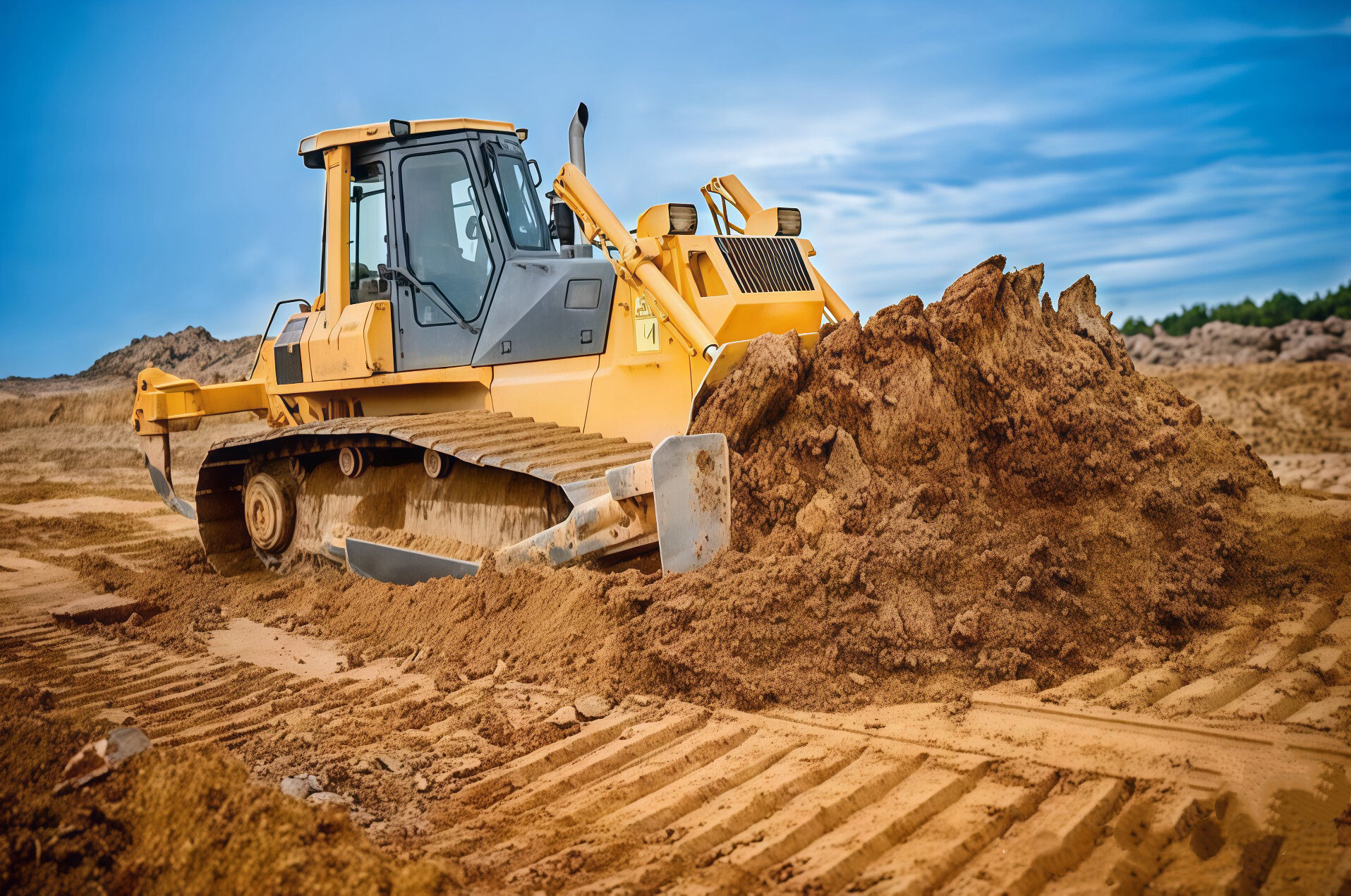
Proper Operating Postures and Movement Patterns
Correct sitting postures and efficient movement patterns can significantly influence bulldozer wear. Ensuring operators maintain a balanced and straight posture while seated helps distribute the physical stress evenly across the equipment, minimizing undue strain on specific components.
According to ergonomic studies, adopting proper techniques such as maintaining a gentle grip on controls and engaging in smooth, deliberate movements can lead to reduced mechanical wear. Operators can implement specific practices like adjusting seat settings for comfort and regularly stretching to mitigate fatigue.
Environmental Awareness for Harsh Conditions
Bulldozer operators need to get familiar with how different weather conditions affect machine wear over time. Take mud for example it really messes with track tension, making everything work harder than normal. Then there's the summer heat which can be brutal on hydraulic systems after a few hours of operation. When working in tough environments, experienced crews tend to slow things down to keep from melting parts, check tracks more often because they know alignment issues come fast in bad conditions, and make sure to clean off debris regularly before rust starts eating away at expensive components. These small adjustments make all the difference when trying to extend equipment life in challenging terrain.
Experts recommend using bulldozers with reinforced structures for muddy conditions and lubricating all contact points to handle heat and cold efficiently.
Load Management and Efficiency Best Practices
Managing loads correctly makes all the difference when it comes to how long a bulldozer lasts and how well it performs overall. Overloading these machines creates serious problems for both the engine and hydraulics, which just breaks down faster than normal. Operators need to know their weight limits and spread out the workload evenly across the blade area. Many modern bulldozers now come equipped with onboard sensors that track load conditions in real time, helping crews avoid those costly mistakes that lead to breakdowns on site. Getting this right isn't just about saving money on repairs either it keeps operations running smoothly day after day.
Case studies show that bulldozers managed under these criteria exhibit longer service life and reduced maintenance costs. Proper load management ensures that each component operates within its design specifications, reducing wear and extending bulldozer longevity.
Leveraging Manufacturer Guidelines for Your Bulldozer Model
Interpreting Maintenance Manuals for Your Machine Type
Understanding bulldozer maintenance manuals is critical for maximizing machine efficiency and longevity. These manuals are comprehensive guides containing essential information about preventive maintenance, troubleshooting, and repair techniques tailored for specific bulldozer models. Key terms often encountered include "scheduled maintenance", "service intervals", and "parts replacement".
Recognized bulldozer manufacturers often adhere to notable standards such as ISO 9001, ensuring quality and consistency in maintenance guidelines. By familiarizing ourselves with these concepts, we can enhance operational efficiency and extend the lifespan of our equipment, thereby reducing the risk of unexpected failures.
Customizing Schedules for Small vs. Large Bulldozers
Getting the maintenance schedule right really depends on what kind of bulldozer we're talking about here. Small machines tend to need attention more frequently since they get worked hard for things like grading land or doing smaller building jobs around town. On the flip side, those big beasts used down at the mines or working on major infrastructure projects can go longer between services but when it's time, the inspection list gets much longer too. Mechanics will tell us that these larger models just take more thorough checking because they handle so much heavier loads day after day.
A small bulldozer might need weekly lubrication checks, whereas a large bulldozer might follow a bi-weekly or monthly schedule. This flexibility ensures that each piece of equipment is maintained at optimal efficiency, preventing premature wear and reducing the risk of costly breakdowns.
Manufacturer-Specific Maintenance Requirements
Adhering to manufacturer-specific maintenance requirements is essential for optimal bulldozer performance. These guidelines are tailored to the design and capabilities of each brand, ensuring operations are efficient and safe. Brands may differ in aspects such as lubricant types, filter changes, and electronic system updates.
Ignoring these specific instructions often results in poor machine performance or worse, actual damage to equipment. When operators follow what's recommended though, they typically see better results and longer lasting machines. Some real world examples back this up too. Maintenance done according to factory specs tends to keep bulldozers running for many more years than those neglected. This shows just how valuable it is to stick with manufacturer guidance rather than trying generic fixes that might not work as well.
Conclusion
In this article, we've delved into various bulldozer maintenance strategies and techniques, emphasizing the critical role they play in keeping these powerful machines in top condition. Regular maintenance is crucial to both extending the lifespan and enhancing the efficiency of bulldozers.
The bulldozers made by Shanbo have built quite a reputation for quality work and lasting reliability, which is why so many pros in construction and earthmoving stick with them. What sets these machines apart isn't just good build quality either. They actually incorporate some pretty impressive tech under the hood that lets operators tackle tough jobs without breaking a sweat. The fuel efficiency alone saves money over time, while the hydraulics system handles rough terrain better than most competitors we've seen on site. For anyone working on major infrastructure projects or land development, Shanbo bulldozers tend to deliver results that go beyond basic expectations. After all, when equipment breaks down during critical phases of a project, it costs far more than the initial investment ever would.
Recommended Products
 Hot News
Hot News
-
“Water Savior” 200 m Reverse Circulation Water Well Drills Arrive in Uzbekistan
2025-03-28
-
Bulldozer Transport Guide: Best Practices, Safety Tips, and Cost Factors
2025-12-15
-
A Complete Guide to Construction Equipment Shipping: Methods, Costs, and Tips
2025-12-12
-
How Bulldozer Work Gets Done: Key Tasks, Techniques, and Applications
2025-12-11
-
Exploring the Capabilities of the Biggest Excavator in the World
2025-12-10
-
Essential Bulldozer Equipment: Components, Attachments, and Uses
2025-12-09
